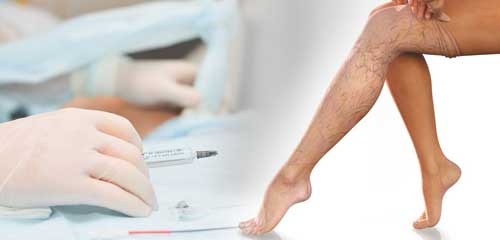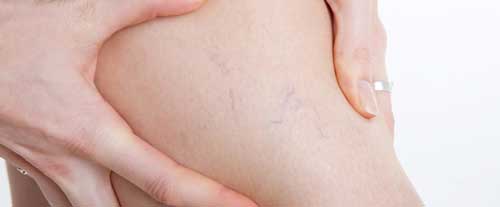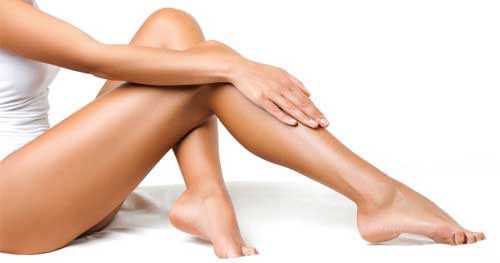
Phlebology worldwide health and medical information
Phlebology Overview
Phlebology is a medical field that is focused specifically on venous disease. A phlebologist will diagnose and treat any disorders of venous origin. Various acute and chronic venous diseases have been identified such as:
- Chronic venous disease (CVD) including varicose and spider veins
- Chronic venous insufficiency (CVI) according to CEAP including venous oedema, skin alterations and Ulcus cruris
- Deep vein thrombosis / Blood clotting
- Superficial venous thrombosis, otherwise known as phlebitis
Various potential risk factors for the developing chronic venous conditions have been identified, such as age, family history of CVD, history of blood clots in the veins, hormonal changes, adiposity and positional factors such as hours spent standing or sitting and cigarette smoking. Pregnancy and long haul flights are also known to be potential risk factors.

Phlebology is an evolving medical sub-specialty devoted to disorders of veins. A phlebologist is a medically qualified doctor who has undergone further post-graduate training to expertly diagnose, treat and where possible, prevent any form of venous disease, whether it be varicose veins, clotting disorders, vascular birthmarks or leg ulcers. Patients with these conditions can seek help by consulting a phlebologist. Up to 30% of the USA population suffer from varicose veins or their associated complications. Symptoms include heaviness, aching, burning, stinging, throbbing, swelling and leg cramps and restlessness. The presence of a skin rash on the leg, small blue veins on the feet, lower leg skin discoloration, pigmentation and scarring are usually due to advanced vein problems. If left untreated they can predispose to leg ulcers. Many elderly patients suffer from leg ulceration, the management of which costs the community millions of dollars every year.
The International Union of Phlebology
To date, the International Union of Phlebology includes a regional, national, and multinational conglomerate of about 70 professional organizations with an interest in the professional study and treatment of patients with venous and lymphatic disorders, in sharing information, and in groundbreaking applications of science, pharmacology, and medical device innovation available worldwide in venous disease. The main roles of the organization are to strengthen the link between international member societies that have a special interest in venous and lymphatic disorders, to promote recommendations on the teaching of phlebology and the training and continuing medical education of phlebologists, to develop a consensus on all aspects of venous and lymphatic disorders, and to encourage clinical and basic research on these topics. Furthermore, the International Union of Phlebology aims to promote regional, national, and international congresses in order to foster the exchange of information among phlebology communities, to encourage creation and activities of national societies, and to encourage these entities to join in the effort to enhance the exchange of scientific information and innovation on a global scale through the International Union of Phlebology.
A number of challenges face the phlebology community and the executive leadership of the society has recognized several issues that are inhibiting the global potential of the International Union of Phlebology, including the perceived impact of the relationship of International Union of Phlebology with individual member societies, the uneven scientific quality and financial performance of International Union of Phlebology World Congresses and Chapter Meetings, the absence of a quantifiable understanding of the effect that the venous disease patient population has on a global scale, the need for greater mobilization and coordination of phlebology information and resources on an international level to promote a worldwide understanding of venous disease and its impact. To pursue the goals of the International Union of Phlebology more effectively, it is mandatory to enhance the available financial and administrative resources to ensure a direct and measurable impact on the global phlebology community and on the care available to patients with venous disease globally.
Special Skills and Methods
Phlebologists have special expertise in using vascular ultrasound, which assists in the accurate diagnosis and modern management of venous disease. Most procedures performed by phlebologists are ultrasound dependent and phlebologists work closely with vascular sonographers. Advances in ultrasonic imaging technology along with the introduction of foam sclerotherapy have significantly enhanced the treatment of varicose veins. Phlebologists developed ultrasound guided sclerotherapy (UGS) and it has enjoyed greater popularity following the introduction of foam sclerosants. UGS provides a non-invasive, efficient and effective alternative to surgery in the management of varicose veins. Catheter Guided Sclerotherapy is a variation of UGS which was first described in 1997. Endovenous Laser Ablation (EVLA) is a new method of treating major veins. EVLA is performed under ultrasound guidance and requires local anaesthetic. EVLA was developed by phlebologists and has gained rapid popularity due to its simplicity and effectiveness. Less traumatic minimally invasive surgical techniques such as ambulatory phlebectomy have added to more effective management of varicose veins. This technique requires further training and is performed by phlebologists with a surgical interest. Many phlebologists perform microsclerotherapy and vascular laser therapy to treat smaller cosmetic veins. Advances in genetics, molecular biology and new testing methods have increased the ability of phlebologists to accurately investigate, diagnose and manage clotting disorders and in particular deep vein thrombosis (DVT). A long-term consequence of DVT is leg ulceration. Some phlebologists run dedicated ulcer clinics in public hospitals or treat ulcer patients in their private practices. Within the phlebology community are practitioners who have a special interest in vascular birthmarks. By using advanced techniques these abnormalities can now be better diagnosed and treated. Phlebologists manage and actively treat lymphoedema and other forms of lymphatic disease.

Today, phlebology crossed the portal of science; it is no longer an empiric part of medicine. Epidemiological studies showed a high incidence of venous pathology in all its forms and the high economic and social burden of venous disease. The old venous anatomy based on cadaveric and surgical remarks was enriched by new knowledge due to ultrasound assessments. An ultrasound assessment allows us to evaluate not only the anatomy, but also the hemodynamics. The clinical, etiological, anatomical, pathophysiological (CEAP) classification was developed, and it is still being updated. Consensus documents, guidelines, and good practice recommendations now provide international support for doctors worldwide about the main procedures in venous disease. A new era has dawned in the management of varicose veins with new technologies, such as endovenous laser therapy, radiofrequency ablation, steam ablation, mechanochemical ablation, glue, etc. In addition, minimally invasive procedures were developed.
Clinical Aspects of Phlebology
Epidemiological studies indicate the presence of various venous diseases in at least a quarter of the world's population. This prevalence determines the fact that a doctor of any specialty in his practice inevitably encounters patients who have certain diseases of the veins. The methods of treating varicose veins have been constantly evolving over the past 20 years, leaving a prominent place today for endovenous techniques, with conventional surgery being gradually abandoned. The modern treatment of varicose veins of the lower-limbs is performed either by tumescent endovenous thermal techniques (laser, radiofrequency, steam) or by nonthermal nontumescent techniques (ultrasound-guided foam sclerotherapy, glue cyanoacrylate, mechanochemical endovenous ablation). The introduction of minimally invasive endovenous ablation techniques (thermal and nonthermal techniques) are associated with several advantages, including minimally invasive, immediate discharge and ambulation, faster recovery, and less periprocedural morbidity. Based on the literature and recommendations, endovenous thermal ablation should be preferred to surgery and foam sclerotherapy in the treatment of small saphenous vein incompetence. The potential benefits, particularly the reduced risk of nerve damage, might be of considerable clinical importance and may lead to a preference for nonthermal techniques in the future. Extensive data about nonthermal techniques are necessary to improve outcomes and achieve robust evidence.
The prevalence of chronic venous insufficiency and its associated health care costs have been greatly underestimated for a long period of time. Many patients suffering from chronic venous insufficiency either present with or have associated lower-limb edema. The main pathophysiological mechanisms of edema formation in such patients include increased capillary hydrostatic pressures secondary to valvular insufficiency or venous obstruction. In addition, there is increased capillary permeability due to associated inflammatory reactions that subsequently lead to leakage of protein-rich fluid into the interstitial space. Such fluid increases the oncotic pressure within the interstitium leading to additional edema formation.
Venous thromboembolism (VTE) describes obstructive presentations of deep venous disease, including deep vein thrombosis and pulmonary embolism, which, together, affect up to a million people in USA every year. VTE is also the single, most common cause of preventable hospital-acquired mortality; furthermore, up to 50% of individuals with deep vein thrombosis develop the postthrombotic syndrome, with its significant impact on quality of life and a considerable economic burden.
The pathology of chronic deep venous incompetence often involves postthrombotic syndrome, secondary to an episode of deep venous thrombosis. Obstruction of the iliac vein and valve incompetence of the femoral/popliteal veins produce symptoms caused by the resulting chronic venous hypertension in the legs. The clinical symptoms are common symptoms of chronic venous insufficiency: varicose vein formation, swelling of the lower-limbs, heaviness, venous claudication, stasis dermatitis/pigmentation, and ulceration; these are generally severe and refractory in cases of deep venous incompetence. Diagnosis and assessment are based on ultrasonography, similarly to general venous disease. As deep venous incompetence necessitates integrated assessment of the veins of the legs, including the inferior vena cava and iliac veins, assessment requires computed tomography, magnetic resonance imaging, venography, and even endovascular assessment with intravascular ultrasound. The initial approach for patients with chronic venous insufficiency is typically compression therapy, superficial venous surgery, and perforator surgery, which are effective for most patients. When these treatment modalities fail to heal, therapeutic options focus on the deep venous system. Endovascular treatment, such as venous stenting, is indicated for obstructive lesions of the iliac vein, and deep venous reconstructive surgery for valve reflux of the femoral/popliteal vein. Iliac vein stenting has become common in recent years, reportedly yielding the most favorable results.
Emergencies in phlebology
Venous diseases which require emergency care include deep venous thrombosis, superficial thrombophlebitis and variceal bleeding. The clinical diagnosis of deep venous thrombosis is often inaccurate, but can be confirmed in most cases with noninvasive tools such as sonography and d-dimer testing. Standard therapy includes compression of the leg and low molecular weight heparin in a therapeutic dosage. Superficial thrombophlebitis includes a variety of disease processes involving superficial veins, some thrombotic and others inflammatory. The most important is varicophlebitis or varicothrombosis, which involves the deep venous system in up to 20% of cases. Along with immediate surgical procedures when the thrombus reaches the deep venous system in the groin, short term therapy with low molecular weight heparin can be used. Variceal bleeding is a typical complication of severe varicose veins. It can be treated by elevating the leg and compression therapy. In addition sclerotherapy or ligation of the bleeding vein can be performed.
Deep Vein Thrombosis Diagnosis
To diagnose deep vein thrombosis, your doctor will ask you about your symptoms. You'll also have a physical exam so that your doctor can check for areas of swelling, tenderness or discoloration on your skin. Depending on how likely you are to have a blood clot, your doctor might suggest tests, including:
- Ultrasound. A wandlike device (transducer) placed over the part of your body where there's a clot sends sound waves into the area. As the sound waves travel through your tissue and reflect back, a computer transforms the waves into a moving image on a video screen. A clot might be visible in the image. Sometimes a series of ultrasounds are done over several days to determine whether a blood clot is growing or to check for a new one.
- Blood test. Almost all people who develop severe deep vein thrombosis have an elevated blood level of a substance called D dimer.
- Venography. A dye is injected into a large vein in your foot or ankle. An X-ray creates an image of the veins in your legs and feet, to look for clots. However, less invasive methods of diagnosis, such as ultrasound, can usually confirm the diagnosis.
- CT or MRI scans. Either can provide visual images of your veins and might show if you have a clot. Sometimes these scans performed for other reasons reveal a clot.
Treatment options
Deep vein thrombosis treatment is aimed at preventing the clot from getting bigger and preventing it from breaking loose and causing a pulmonary embolism. Then the goal becomes reducing your chances of deep vein thrombosis happening again.
Deep vein thrombosis treatment options include:
- Blood thinners. Deep vein thrombosis is most commonly treated with anticoagulants, also called blood thinners. These drugs, which can be injected or taken as pills, decrease your blood's ability to clot. They don't break up existing blood clots, but they can prevent clots from getting bigger and reduce your risk of developing more clots. The injectable medications can be given as a shot under the skin or by injection into your arm vein (intravenous). Heparin is typically given intravenously. Other similar blood thinners, such as enoxaparin (Lovenox), dalteparin (Fragmin) or fondaparinux (Arixtra), are injected under the skin. Other blood thinners can be given in pill form without the need for an injectable blood thinner. These include rivaroxaban (Xarelto), apixaban (Eliquis) or edoxaban (Savaysa). You might need to take blood thinner pills for three months or longer. It's important to take them exactly as your doctor instructs because taking too much or too little can cause serious side effects. If you take warfarin, you'll need periodic blood tests to check how long it takes your blood to clot. Pregnant women shouldn't take certain blood-thinning medications.
- Clot busters. If you have a more serious type of deep vein thrombosis or pulmonary embolism, or if other medications aren't working, your doctor might prescribe drugs that break up clots quickly, called clot busters or thrombolytics. These drugs are either given through an IV line to break up blood clots or through a catheter placed directly into the clot. These drugs can cause serious bleeding, so they're generally reserved for severe cases of blood clots.
- Filters. If you can't take medicines to thin your blood, you might have a filter inserted into a large vein — the vena cava — in your abdomen. A vena cava filter prevents clots that break loose from lodging in your lungs.
- Compression stockings. To help prevent swelling associated with deep vein thrombosis, these are worn on your legs from your feet to about the level of your knees.

This pressure helps reduce the chances that your blood will pool and clot. You should wear these stockings during the day for at least two years, if possible.
Once you receive treatment for deep vein thrombosis (DVT), you need to watch your diet and watch for signs of excessive bleeding, as well as take steps to prevent another DVT. Check in with your doctor regularly to see if your treatment needs to be modified. Take your blood thinners as directed. If you've had DVT, you'll be on blood thinners for at least three to six months. Watch for excessive bleeding, which can be a side effect of taking blood thinners. Talk to your doctor about activities that could cause you to bruise or get cut, as even a minor injury could become serious if you're taking blood thinners. If you've been on bed rest because of surgery or other factors, the sooner you get moving, the less likely blood clots will develop. Wear compression stockings to help prevent blood clots in the legs if your doctor recommends them. Compression stockings assist in the therapy management of venous diseases and treatment of varicose veins by helping to improve blood flow and reduce swelling in the affected areas. They are designed to be discreet and can be worn for everyday life, during sport, at the office, or for hiking. Keeping active in your everyday life with regular walking, swimming and cycling can also help maintain the best health for your leg veins.
Related
Buy Fondaparinux (Arixtra) This medication is used to treat serious blood clots in the legs or lungs
Buy Heparin This medication is used to prevent and treat blood clots
These drugs, also called anticoagulants, are the most common treatment for DVT. They can keep a clot from growing or breaking off, and they prevent new clots from forming. But they can't thin your blood, despite their name, or dissolve an existing clot.
Categories
- Allergy
- Alcohol Addiction
- Anxiety
- Cardiology
- Depression
- Dermatology
- Endocrinology
- Phlebology
- Diabetes
- Herpes Viruses
- Gastroenterology
- General Health
- Gerontology
- Hematology
- Hepatology
- Immunology
- Infectious Diseases
- Men's Health
- Neurology
- Obesity
- Oncology
- Ophthalmology
- Orthopedics & Sports Medicine
- Parasitic Diseases
- Pediatrics
- Psychiatry
- Radiology
- Respiratory
- Rheumatology
- Smoking Cessation
- Urology
- Women's Health